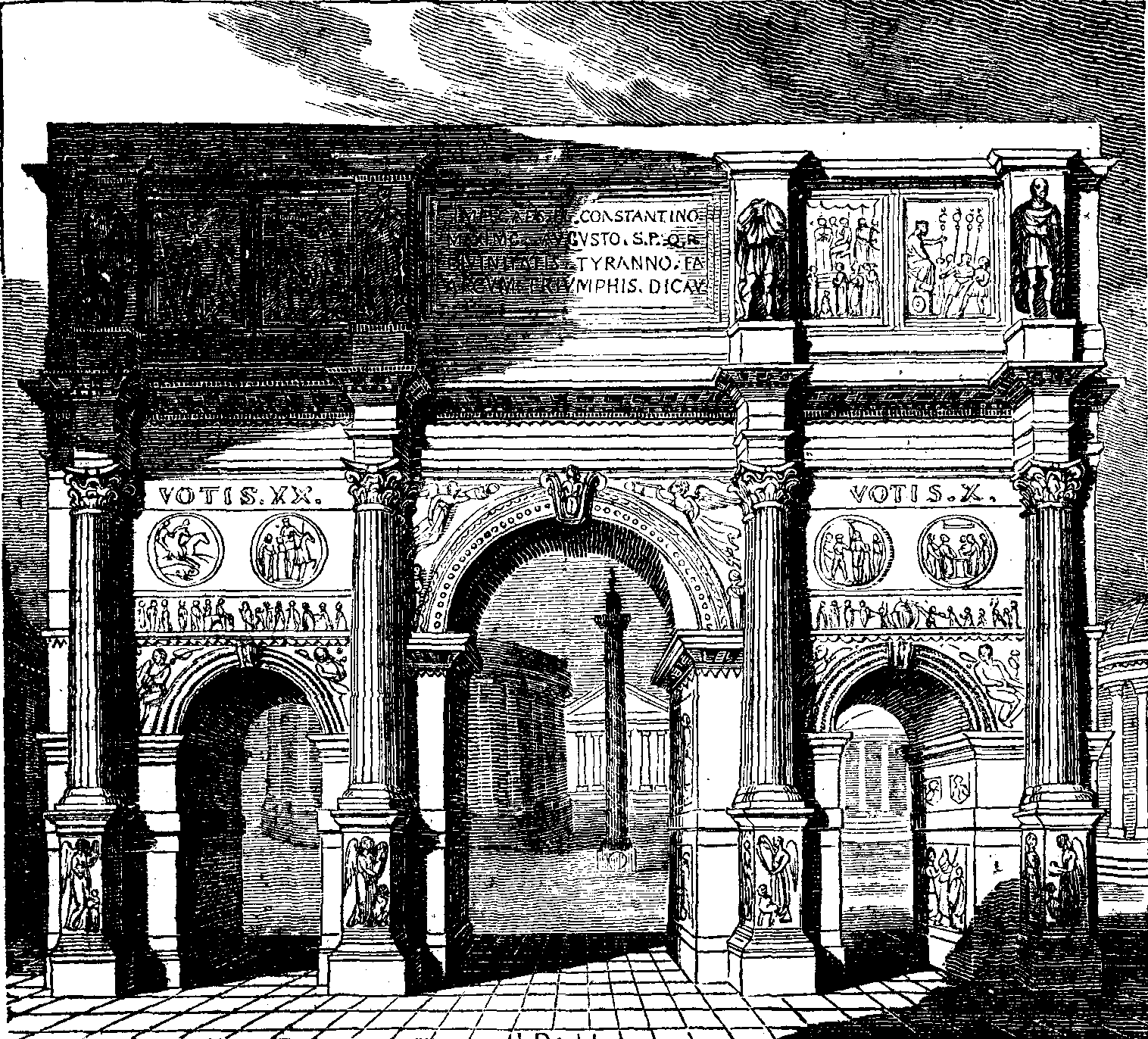E-text prepared by Jonathan Ingram, William Flis,
and Project Gutenberg Distributed Proofreaders
THE MIRROR
OF
LITERATURE, AMUSEMENT, AND INSTRUCTION.
| Vol. XII. No. 345. | SATURDAY, DECEMBER 6, 1828. | [PRICE 2d. |
The Arch of Constantine, at Rome.
"Still harping" on the Fine Arts—Architecture andPainting. Of the former, the above engraving is anillustration; and of the latter, our readers will find a beautifulsubject (from one of Turner's pictures) in a Supplementpublished with the present Number.1
The Arches of Rome were splendid monuments of triumph, erectedin honour of her illustrious generals. They were at first verysimple, being built of brick or hewn stone, and of a semicircularfigure; but afterwards more magnificent, built of the finestmarble, and of a square figure, with a large, arched gate in themiddle, and two small ones on each side, adorned with columns andstatues. In the vault of the middle gate, hung winged figures ofvictory, bearing crowns in their hands, which, when let down, theyplaced on the victor's head, when he passed in triumph.
The Arch of Constantine, the most noble of all of thesestructures, subsists almost entire. It was erected by the senateand Roman people, in honour of Constantine, after his victory overMaxentius, and crosses the Appian Way, at [pg 386] thejunction of the Coelian and Palatine Hills. Here it stands as thelast monument of Roman triumph, or like the December sun of "theworld's sole monument."
This building consists of three arches, of which the centre isthe largest; and has two fronts, each adorned with four columns ofgiallo antico marble, of the Corinthian order, and fluted,supporting a cornice, on which stand eight Dacian captives ofPavonazzetta, or violet-coloured marble.
The inscription on both sides of the architrave imports, that itwas dedicated "to the Emperor Cæsar Flavius ConstantineAugustus, the greatest, pious, and the happy; because by a divineimpulse, the greatness of his courage, and the aid of his army, heavenged the republic by his just arms, and, at the same time,rescued it from the tyrant and his whole faction." On one side ofthe arch are the words, "Liberatori urbis," to the deliverer of thecity; and on the other, "Fundatori quietis," to the founder ofpublic tranquillity.
Although erected to the honour of Constantine, this archcommemorates the victories of Trajan, some of the basso-relievos,&c. having been pilfered from one of the arches of Trajan. Thisaccounts for the Dacian captives, whose heads Lorenzo de Medicisbroke off and conveyed to Florence, but the theft might not havebeen so notorious to posterity, had not the artists ofConstantine's time added some figures of inferior merit. Forsythsays, "Constantine's reign was notorious for architecturalrobbery;" and the styles of the two emperors, in the present arch,mar the harmony by their unsightly contrasts.
Although the decree for erecting this arch was, without doubt,passed immediately af
